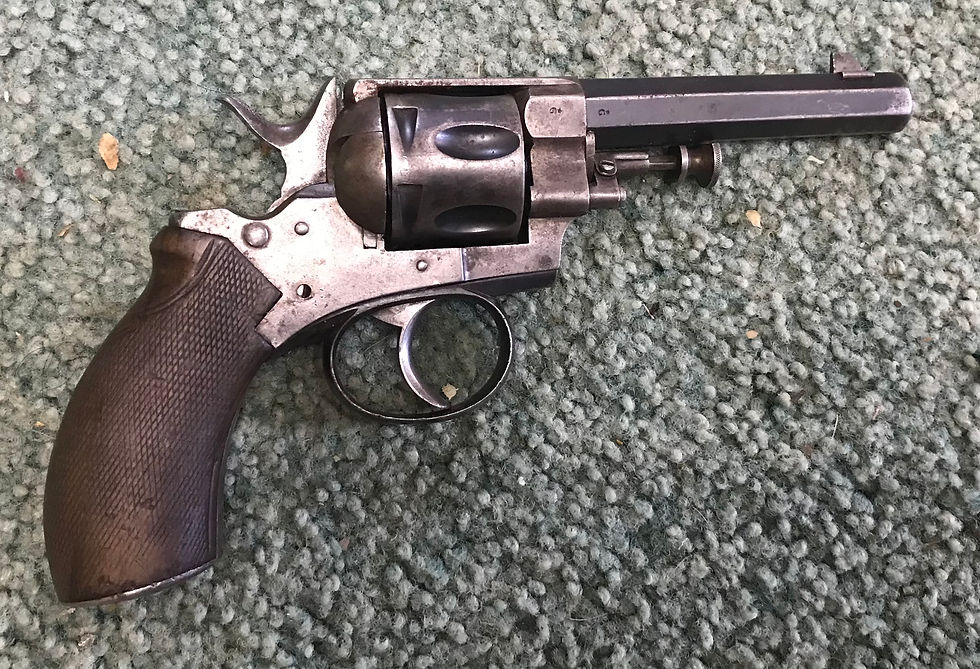Making .442 Webley and .450 Adams
- muleequestrian

- Jun 8
- 3 min read
In today’s world of “plastic fantastic” cookie cutter guns, it’s no secret that I like older antique firearms. There’s nothing wrong with modern gee-whiz materials with the newer stuff, but half the fun of having older guns is the research involved and making the ammunition to get these old smoke wagons working again. So in the case of a few of my antique revolvers, I have to make my own ammunition. And sometimes it takes a little bit of finesse — other times it’s pretty straightforward.

From top to bottom in the picture is a double action RIC in .450 Adams, made by Mortimer in Edinburgh. The second is an early Metropolitan revolver also in .450 Adams. The bottom revolver is a Webley British Bulldog in .442 Webley caliber. Luckily for me — my antique British revolvers are still pretty tight and in good condition. Even more fortunate — I don’t end up having to thin the rims of the donor brass to get them to fit. With some of the old guns, trimming the rim thickness is important.

This revolver is in caliber .380. All are double action revolvers in difficult to find cartridges, and they all load from a drop down loading gate. I won’t go into detail about the various models and calibers available, as it would pretty much fill up a book. I don’t have the room to talk about this here.

I trim the cases for each revolver from nickel plated .44 magnum or .44 Special cases, and from 455 Webley cases respectively. Since both cases are similar in size I chose the nickel plated ones for the .442 to eliminate guess work as to which cartridge fits which pistol. A glance will tell me which ammunition goes into each revolver.
As with all antiques, I recommend that you do NOT use any smokeless loads in them despite smokeless data available. The reason behind this is the difference in the pressure curve between the two types of powder. Smokeless generates gas pressure to launch the projectile, while black powder is a low grade explosive. I realize that a lot of shooters don’t care for black powder loads, and there are examples of load data available for smokeless cartridges, but as a general rule I stick with the original loads.

The projectiles I chose were cast from a heeled bullet mold. They weigh 200 grains each. The heeled bullet fits inside the cases without having to ream them out. My .442 ammunition is lubed with the normal grease groove, but the .450 projectiles are powder coated by me in my shop. The powder coating process is explained in another blog post. The powder charge for the .450 is 13 grains of 3fffg powder, while the .442 gets the same. Both cartridges have similar performance ballistically, only diameters are different. For my .380 revolver loads, I use untrimmed or unmodified .38 S&W brass and load them with 10 grains of 3fffg powder over a 158 grain cast bullet. I could probably load a 200 grain projectile as the original .38/200, but the 158 ‘s are not too snappy.
While none of these revolver loads are considered powerful by today’s modern standards, they were considered adequate for self defense in their day. All of them are a heck of a lot of fun to shoot.

Comments